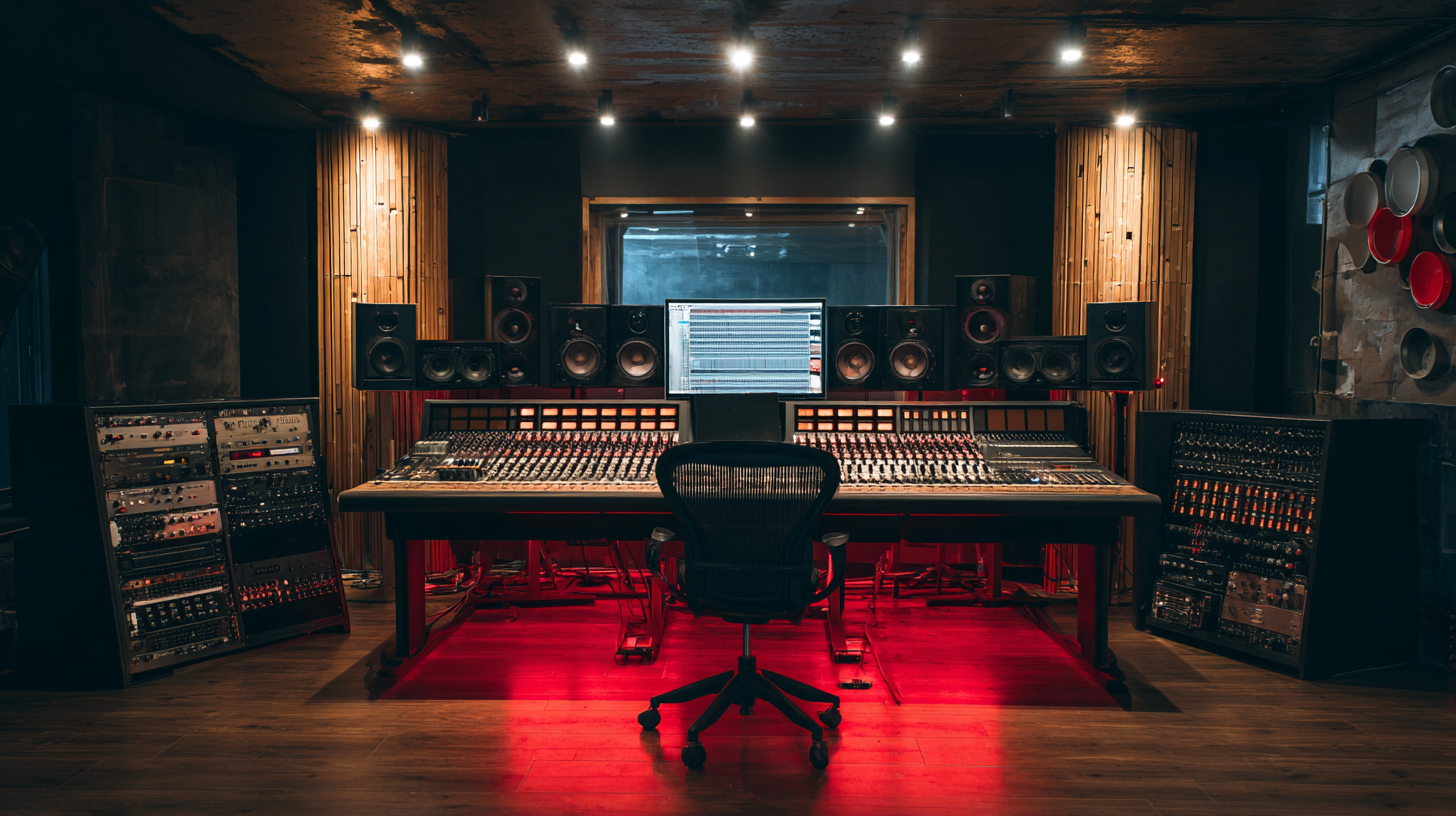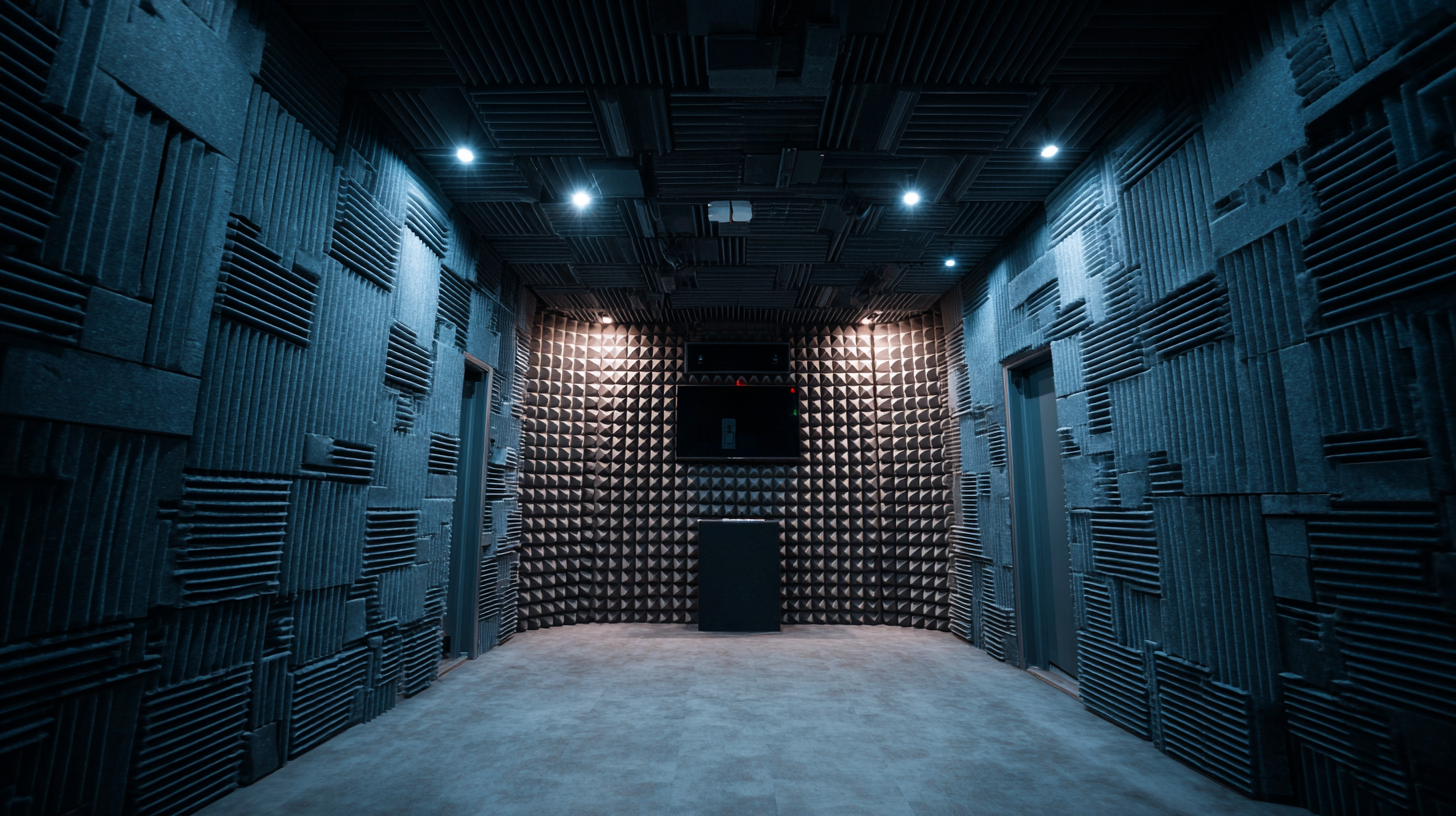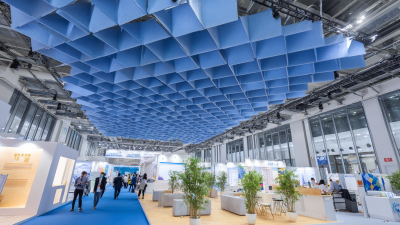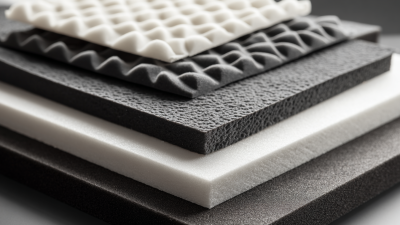Transform Your Space: The Ultimate Guide to Choosing the Best Sound Proof Panels for Home and Studio
In today's fast-paced world, achieving a serene and productive environment in both homes and studios has become increasingly essential. Sound proof panels are a crucial component in this transformation, as they help reduce noise pollution and enhance acoustics. According to a report from the Acoustical Society of America, indoor noise levels can exceed recommended limits by up to 10 decibels, leading to distractions that hinder focus and creativity. Furthermore, research from the World Health Organization indicates that exposure to high noise levels can negatively impact mental health, leading to increased stress and decreased productivity. Thus, selecting the right sound proof panels not only contributes to improved sound quality but also plays a vital role in fostering a more peaceful atmosphere, whether in a home office or a professional studio. This ultimate guide will navigate you through the essential factors to consider when choosing the best sound proof panels to transform your space effectively.

Understanding Soundproof Panels: Types and Materials Explained
Understanding soundproof panels is crucial for anyone looking to create a quieter home or studio environment. Various materials and types are available, each catering to specific noise control needs.
Acoustic foam panels are popular for their affordability and effectiveness in reducing high-frequency sounds, while heavier materials such as mass-loaded vinyl offer superior mass for blocking low-frequency noise. The global soundproofing materials market underscores this trend, with soundproof drywall materials predicted to reach USD 38.1 billion by 2035, indicating robust growth as more individuals invest in noise control solutions.
Moreover, the industrial noise control sector is also experiencing significant expansion. The market for sound barriers, expected to grow from USD 6.1 billion in 2025 to USD 11.2 billion by 2035, highlights the increasing demand for effective acoustic solutions in both residential and commercial applications. This growth reflects a broader recognition of the importance of soundproofing in enhancing comfort and productivity in various environments, as well as the ongoing innovations improving the efficacy of sound insulation materials, such as lightweight double leaf walls that optimize sound transmission loss.
Assessing Your Space: How to Identify Soundproofing Needs
When it comes to soundproofing your space, the first step is to accurately assess your needs. Begin by identifying the primary sources of noise that affect your comfort or productivity. Are you dealing with external sounds like traffic or neighbors, or is the noise coming from within your home, such as loud appliances or conversations? Taking note of these disruptions will help you determine the areas that require the most attention.

Next, consider the layout and acoustics of the room. Different materials and surfaces can either amplify sound or help to absorb it. A space with hard floors and bare walls typically reflects sound, while carpets, curtains, and furniture can dampen it. Measure the dimensions of your room and evaluate the existing furnishings to see where soundproof panels might make the most impact. This thorough evaluation will guide you in choosing the right types of soundproof panels, whether they are acoustic foam, fabric-wrapped panels, or heavy drapes, ensuring your selected solutions effectively enhance your environment.
Measuring Effectiveness: Evaluating Soundproof Panel Ratings
When it comes to soundproofing your home or studio, understanding soundproof panel ratings is essential for making an informed decision. These ratings typically include Noise Reduction Coefficient (NRC) and Sound Transmission Class (STC). NRC measures how much sound is absorbed by a panel, while STC indicates how well a panel prevents sound from passing through. A high NRC rating is crucial for areas where you want to reduce echo and background noise, like recording studios or home theaters. Conversely, prioritizing STC ratings will be beneficial in spaces where you seek isolation from exterior noises.
Tips: To maximize effectiveness, look for panels that offer a balanced combination of high NRC and STC ratings. Additionally, consider the thickness and density of the panels, as thicker materials tend to provide better sound insulation. Installation method is another important factor; ensure panels are securely attached, as gaps can compromise their performance. Lastly, don't overlook the aesthetic value—select designs that complement your space while performing effectively.
Ultimately, evaluating soundproof panel ratings will empower you to choose the best options for your specific needs. By focusing on the right metrics and following these tips, you can transform your environment into a sound-controlled oasis.
Soundproof Panel Effectiveness Ratings
This bar chart illustrates the sound absorption coefficients of different soundproof panels, helping you evaluate their effectiveness for your space.
Installation Tips: How to Properly Mount Soundproof Panels
When it comes to soundproofing your home or studio, choosing the right soundproof panels is essential, but proper installation is equally crucial for achieving optimal results. First, ensure that you assess the acoustics of your space before mounting the panels. Identify the areas where sound bounces the most, like corners and large bare wall sections, as these are where absorption is needed most.
Installation Tips: Start by cleaning the wall surfaces to ensure strong adhesion. Use a level to mark accurate positions for your panels, which helps in achieving a professional look. For a more robust installation, consider using adhesive strips or hooks that allow for easy removal or adjustment. If you're working with heavier panels, using screws may provide added security.
Additionally, don’t forget to seal any gaps around windows or doors with weather stripping to minimize sound leakage. This way, your soundproofing efforts won’t be compromised by external noise. Creating a more serene environment in your home can significantly enhance comfort and productivity, especially in studios where sound quality is critical.

Design Considerations: Blending Soundproof Panels with Your Decor
When designing a space that prioritizes acoustic comfort, the aesthetic integration of soundproof panels into your decor is essential. According to a report by the Acoustical Society of America, effective soundproofing not only enhances the acoustic quality of a room but also contributes to the overall ambiance and visual harmony of the environment. The choice of panel material, color, and shape should reflect your personal style while addressing the specific acoustic needs of the space. For instance, fabric-wrapped panels can be customized to match your interior color scheme, allowing for a seamless blend with existing decor.
Furthermore, the placement of soundproof panels plays a crucial role in both aesthetics and functionality. A study published in the Journal of Environmental Psychology suggests that strategically placing panels in high-reflection areas can significantly reduce noise levels while enhancing the room's visual appeal. The architectural design of the space should guide the selection of panel types—larger, more striking designs can serve as focal points, while smaller, subtle panels can enhance the space without overwhelming it. By considering these design factors, you can create an environment that is not only acoustically optimized but also visually engaging.
Transform Your Space: The Ultimate Guide to Choosing the Best Sound Proof Panels for Home and Studio
| Panel Type | Material | STC Rating | Aesthetic Options | Best Use Case |
|---|---|---|---|---|
| Acoustic Foam Panels | Polyurethane | 10-25 | Multiple Colors & Shapes | Home Theaters and Studios |
| Fabric-Wrapped Panels | Wood and Fabric | 20-35 | Custom Fabrics and Colors | Meeting Rooms and Offices |
| Wall Panels | Wood, Plastic, or Gypsum | 30-45 | Natural Wood Grain Finishes | Recording Studios and Broadcast Rooms |
| Ceiling Tiles | Mineral Fiber | 25-35 | Various Patterns and Textures | Commercial Spaces and Schools |
| Bass Traps | Fiberglass | 30-40 | Simple, Functional Design | Home Studios and Live Sound Areas |
Related Posts
-

Exploring the Impact of Sound Absorbing Panels at the 138th Canton Fair 2025: Industry Insights and Trends
-

Transform Your Space with Stylish Sound Absorbing Panels: A Comprehensive Guide
-

The Ultimate Guide to Choosing the Best Sound Proof Panels for Your Home
-

Exploring Market Trends: Sound Absorbing Panels at the 138th Canton Fair 2025 with Key Industry Insights
-

7 Best Sound Absorbing Panels for Ultimate Acoustic Comfort
-

Unlocking Acoustic Perfection: Why Soundproof Foam is Your Best Investment for Noise Reduction